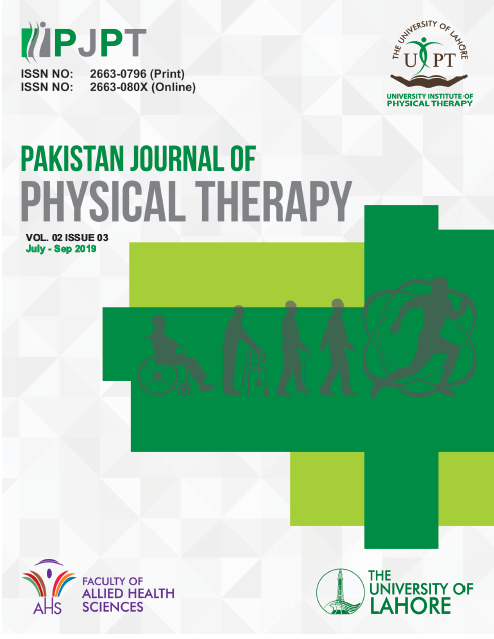Frequency of Upper Limb Musculoskeletal Disorders among Architects of Lahore
DOI:
https://doi.org/10.52229/pjpt.v2i03.1146Keywords:
Frequency, Musculoskeletal disorders, architectsAbstract
Objective:
To determine the frequency of common upper
limb musculoskeletal problems in architectures.
Methodology:
The sample size was 138. A cross sectional
survey was conducted among architects of
Lahore, convenient sampling technique was
used. Architects community in Lahore like NCA
were included. Study duration was 6 months
after the approval of synopsis was completed in 6
months. Inclusion Criteria was architects
working more than a year in the field. Both
genders are equally inclusive. Age 24 plus.
Exclusion Criteria was participants having
systemic disorders. Having neurological
conditions and recent trauma. A modified
Nordiac questionnaire and upper extremity
functional index was used. Questionnaire was
distributed among the population who were
selected according to the inclusion criteria. A
consent form was filled by the participant.
Results: The results shown that 65.9% respondents had
neck pain, 49.3% respondents had wrist and
hand pain, 37.7% respondents had pain in the
upper back and 27% respondents had pain in
shoulder and 20.3% respondents had pain in
elbow in the last 12 months .
Conclusion: In this cross sectional survey of 138 participant's
architects had found to have the neck (65.9%)
and wrist/hand (49.3%) pain frequencies which
are affecting their functional efciencies. The
results suggest more scope is to be cover in the
future.



